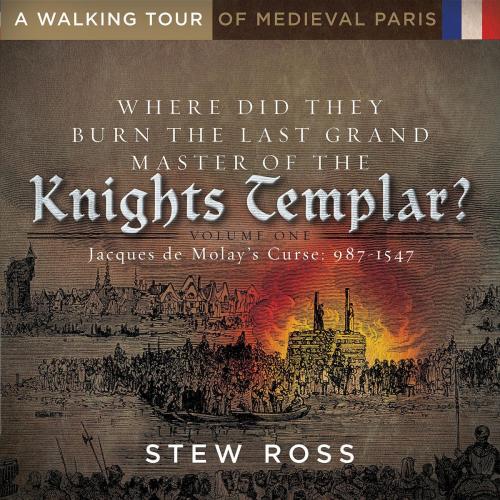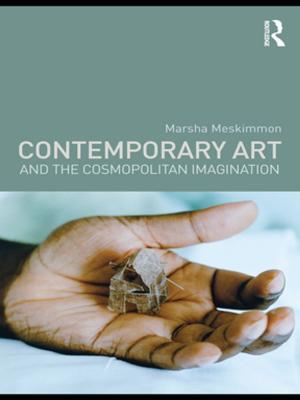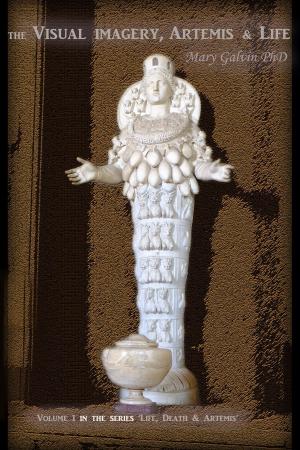Where Did They Burn the Last Grand Master of the Knight's Templar?-Jacques de Molay's Curse Volume One
A Walking Tour of Medieval Paris
Nonfiction, Travel, Europe, France, History| Author: | Stew Ross | ISBN: | 9781941558140 |
| Publisher: | Yooper Publications | Publication: | December 5, 2016 |
| Imprint: | Yooper Publications | Language: | English |
| Author: | Stew Ross |
| ISBN: | 9781941558140 |
| Publisher: | Yooper Publications |
| Publication: | December 5, 2016 |
| Imprint: | Yooper Publications |
| Language: | English |
Let us take you on a visit to the Paris of the Middle Ages. Come walk in the footsteps of the men, women, and children who lived, worked, and played in medieval Paris. Stop and see the only three residences still existing from medieval Paris. Learn about the scandalous Nesle Affair. Many of the stops are sites that most tourists don’t know even exist.
Begin your series of five walking tours on the Île de la Cité. Your stops will concentrate on the west side of the island—the original site of the medieval palace. You’ll visit the only remaining portions of the palace. Upstairs in the second level of the Sainte-Chapelle (the Holy Chapel) is the most spectacular display of stained glass windows.
After finishing Walk Two, you will have visited one of the only three remaining Paris residences constructed in the Middle Ages. The remains of Philippe’s city wall will be on your itinerary. The only remaining medieval cloister will round out the walk.
Walk Three takes you to John the Fearless’s tower. A recurring theme of the book is the One Hundred Years War and the feud between supporters of John the Fearless and the Louis, Duke of Orléans. You will learn how King Philippe II Augustus’s city wall was anchored by four towers along the river. It was in one of these towers that the scandal called the Nesle Affair occurred almost 150 years later.
Finally, you will learn what is meant by the Medieval Conjugal Debt. Unlike England, France would not allow women to ascend the throne—French Salic Law is explained in Walk Four. The apartments in the three little connected courtyards called the Cour du Rohan are where the French kings stashed their “favorites” or mistresses.
Between Volumes One and Two, you will visit places that tourists (and even Parisians) do not know exist. One is the spot where the last grand master of the Knights Templar was burned. Another is the original Roman amphitheater on the Left Bank. Most people are unaware of the Roman influence on Paris.
Let us take you on a visit to the Paris of the Middle Ages. Come walk in the footsteps of the men, women, and children who lived, worked, and played in medieval Paris. Stop and see the only three residences still existing from medieval Paris. Learn about the scandalous Nesle Affair. Many of the stops are sites that most tourists don’t know even exist.
Begin your series of five walking tours on the Île de la Cité. Your stops will concentrate on the west side of the island—the original site of the medieval palace. You’ll visit the only remaining portions of the palace. Upstairs in the second level of the Sainte-Chapelle (the Holy Chapel) is the most spectacular display of stained glass windows.
After finishing Walk Two, you will have visited one of the only three remaining Paris residences constructed in the Middle Ages. The remains of Philippe’s city wall will be on your itinerary. The only remaining medieval cloister will round out the walk.
Walk Three takes you to John the Fearless’s tower. A recurring theme of the book is the One Hundred Years War and the feud between supporters of John the Fearless and the Louis, Duke of Orléans. You will learn how King Philippe II Augustus’s city wall was anchored by four towers along the river. It was in one of these towers that the scandal called the Nesle Affair occurred almost 150 years later.
Finally, you will learn what is meant by the Medieval Conjugal Debt. Unlike England, France would not allow women to ascend the throne—French Salic Law is explained in Walk Four. The apartments in the three little connected courtyards called the Cour du Rohan are where the French kings stashed their “favorites” or mistresses.
Between Volumes One and Two, you will visit places that tourists (and even Parisians) do not know exist. One is the spot where the last grand master of the Knights Templar was burned. Another is the original Roman amphitheater on the Left Bank. Most people are unaware of the Roman influence on Paris.















